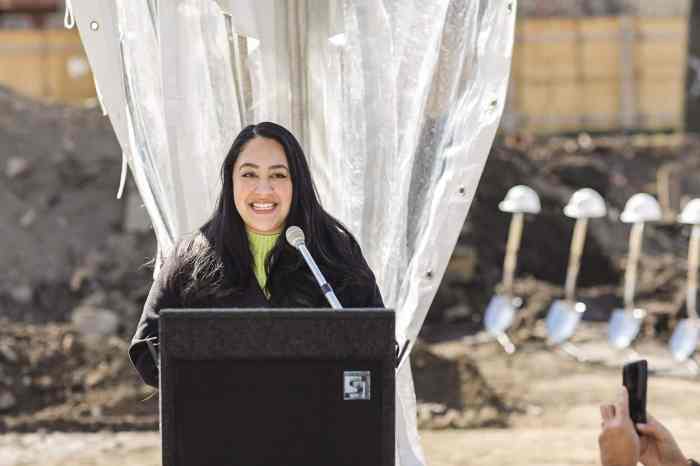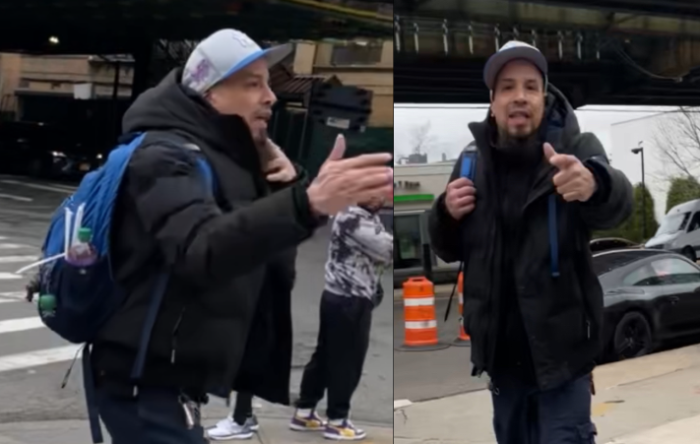
The fatal police shooting of Saheed Vassell has become a flash point within the Crown Heights community as questions mount over the NYPD’s response to a mentally ill man whose condition was known in the neighborhood.
Emotions ran high at an emergency mental health advisory committee meeting convened on Wednesday by Sen. Jesse Hamilton, who represents Crown Heights, as attendees expressed frustration over what they perceive to be systemic issues in the way officers respond to 911 calls in communities of color.
Some residents questioned why members of the NYPD’s neighborhood policing program were not called in to respond to Vassell.
Vassell, 34, was shot nine times by four officers responding to 911 calls reporting a man pointing what appeared to be a gun at pedestrians on April 4, according to police.
The weapon he was holding turned out to be a metal pipe. Although it was later revealed Vassell was bipolar and not on medication, the calls to police were not reported as an emotionally disturbed person (EDP).
Samuel Williams, Hamilton’s community liaison and mental health adviser, said an EDP call would have prompted a different unit of officers to respond who may have better understood how to defuse the situation.
He argued that if neighborhood policing officers (NCOs) had been called to the scene, they may have recognized Vassell as a person with a mental health issue.
“They would have recognized that this particular individual happened to have a mental health issue, and then they would have utilized a more appropriate [crisis intervention team] response, or had an [emergency service unit] come in to address the EDP,” he said.
NCOs are expected to “function as adjuncts to the local detective squads, responding swiftly to breaking incidents and developing leads and evidence that might have been missed under the old patrol model,” according to the NYPD’s website. None of the officers who shot Vassell were NCOs, but the NYPD declined to say if any were on the scene when the shooting occurred.
Williams also questioned what type of discretion was used when officers approached Vassell.
“They thought they had an active shooter, now mind you, nobody was shot until the police showed up,” he said. “There was no assessment, there was no look at, ‘oh, this guy is possibly mentally ill.’ ”
Fordham University School of Law professor Cheryl Bader said it’s important that community policing is conducted in a comprehensive way and noted that the NYPD’s program is still being rolled out.
“I think most of the policing that gets done in marginalized neighborhoods of color is still a patrol car response to the 911 call,” she added.
Introduced in 2015, the NYPD has launched neighborhood policing in 63 precincts and nine housing districts, with the goal of bringing the program to all 77 precincts by 2019. NCOs were introduced into the 71st Precinct, which covers Crown Heights, in 2016.
It’s not a guarantee, however, that Vassell would have lived if NCOs had responded to the scene, Bader said.
“Even if you’re familiar with someone, and know that they’re mentally ill. . .it’s hard to predict their conduct,” she said. “And so, it’s not clear to me that having more NCOs would have prevented this particular tragedy.”
Another side to Vassell’s case, according to Bader, is how the city’s criminal justice system addresses mental health issues.
“When you’re dealing with people who are mentally ill, I think the criminal justice system is very ill equipped,” Bader said.
Both Williams and Bader pointed to a lack of training across the police department when it comes to handling calls involving people with mental health problems.
“What happens is that we get the average police officer dispatched to the community, that may have some form of mental health training, but not sufficient to assess the particular situation and not provide the appropriate amount of support,” Williams said. “When you have these particular issues, police usually revert to what they were trained, and the training is usually to arrest, to stop the individual by any means necessary.”
Bader said the NYPD could benefit from a more comprehensive approach to learn from high-risk incidents after they happen.
“After that encounter, they need to go through a process of reflection and focus on what was done that escalated the process and what was done to de-escalate the process and really try to learn from reflection,” she said. “That kind of training and time to reflect is very costly and it’s an investment, but I think that’s an investment that needs to be made.”
Vassell’s death is under investigation by New York Attorney General Eric Schneiderman’s office, as the NYPD conducts its own internal probe into the officers’ actions. But Vassell’s family and the Crown Heights community have demanded more accountability and transparency from the NYPD.
“They have to put more emphasis to utilize the training, to utilize more humane and common-sense approaches, not to just go on an assumption that a person happens to be a combatant when there were no shots fired,” Williams said. “That way we can reduce the [number] of fatal encounters in the community.”

















